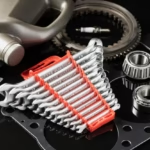Now Reading: Common Problems in DTF Printing and How to Fix Them
-
01
Common Problems in DTF Printing and How to Fix Them
Common Problems in DTF Printing and How to Fix Them

As in any printing technique, there are problems associated with DTF printing that may affect the quality of the end product. It is important to accept some of these common issues and their resolutions to ensure that the printing process runs smoothly. In this article, we will address some of the common DTF printing problems including their possible causes and ways of rectifying them.
- Ink Smudging or Blurring
Problem: Sometimes, it is inevitable for the ink used in the printer to smear and to blur the transferred designs during the heat pressing or sublimating process as long as the print head is dirty or the ink has not yet completely dried up.
Solution: It is advisable to make it a point to routinely clean the print head in order to see to it that remnants of dried ink or grime are gone. In case the problem can still be noticed, it is wise to leave the ink to sit for a while longer when applying the transfer. Make sure that you are using the appropriate drying setup of the printer.
- Clogged Print Heads
Problem: A print head that is clogged tends to produce a print that is very poor. It tends to cause some missing lines or some areas within the design being faint.
Solution: Run a cleaning cycle on the printer. Where the problem still persists, use a cleaning solvent appropriate for the kind of printer in question. Routine maintenance and routine cleaning will also cater for elimination of clogs forming in the first place.
- Poor Adhesion of the Transfer
Problem: There is a possibility that the transfer will not stick to the fabric correctly and it will be scratched off or washed off eventually.
Solution: Ensure that you are applying the appropriate temperature and love on your heat press machine. It is also important to exercise the pressure of time and preheat the fabric and transfers. Finally, verify that the appropriate adhesive powder is being used and that it is well distributed.
- Faded Prints
Problem: Faded prints may result from the application of inks of poor quality or bad printer settings.
Solution: Purchase quality DTF inks and ensure that the printer settings are well calibrated. Look at the color profile that is in use and adjust it accordingly to help obtain the right colors for the prints.
- Design Misalignment
Problem: Prints that are not in their intended position are as a result of the incorrect application of the transfer film on the garment or blanket misplacement on the printing machine.
Solution: Prior to applying the transfer, take a second and consider in detail the placement on the garment. Use gummed paper, which can withstand heat, to hold the film firmly while heat transfer is in progress in order to avoid movement.
- Print Quality Issues on Dark Fabrics
Problem: Sometimes when printing on dark fabrics, the colors may appear dull or there is poor contrast.
Solution: When printing on dark fabrics, one should apply a white ink underbase. This serves as a consistent foundation for the color layers while making sure the colors are bright and are true to the design.
- Bubbles or Wrinkles in the Transfer
Problem: The flourishment or the number of wrinkles may turn out during the transfer process which does affect the polish of prints.
Solution: Prior to the heating process, ensure that the transfer film is fully pressed to the fabric to prevent formation of creases and rolls. Teflon sheet or parchment paper may be used above the transfer to avoid bubbles which may form during the heating.
Conclusion
If you currently know these common issues in DTF printing and what methods can be applied to overcome it, printing will become a faster and more effective operation. Some of the fundamental principles of maintenance, preparatory work and selection of materials have to be observed in order to get good quality prints and satisfied customers. With some time and effort, you will excel in DTF print production that caters to the highly competitive world of custom t-shirts.
Leave a reply
You must be logged in to post a comment.




































Pingback: The Future of DTF Printing: Trends and Innovations - PureTechZone.com
Pingback: Comparing DTF Printing with Other Printing Methods - PureTechZone.com